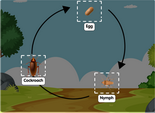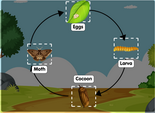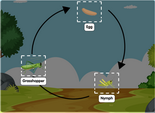Spiders as Invertebrates, Science Game for Kids
This science game helps children learn and practice about spiders. Arachnids are spiders that are often mistakenly thought to be insects. This game will teach you more about spiders.
Embark on a Web of Adventure with Spiders Games Online
Among the most intriguing creatures of the natural world are spiders. These eight-legged wonders have inspired curiosity, tales, and even a tad bit of fear across cultures. For young learners, understanding the intricate life of a spider can be a compelling journey, and what better way to dive into it than through spiders games online? In this era of digital learning, online games serve as an exceptional bridge between fun and knowledge. Let's spin a web of understanding about these interactive platforms and their role in educating kids about spiders.
Spiders: The Eight-Legged Wonders
Spiders are arachnids, different from insects due to their unique body structure and number of legs. These creatures have been on Earth for millions of years, adapting and evolving in various ways. A spider's life is filled with intriguing activities: from weaving intricate webs to hunting and camouflage. Understanding the life cycle, habits, and habitat of spiders provides kids with a broader perspective on the importance of biodiversity.
Discover the Life of a Spider Through Games
The spiders as invertebrates science game for kids is a fantastic starting point. This interactive platform:
Encourages Exploration: Kids can delve into various aspects of a spider's life, from its anatomy to its place in the food chain.
Offers Engaging Graphics: Vibrant illustrations and animations ensure a captivating experience, making the learning process seamless and enjoyable.
Promotes Critical Thinking: Challenges and quizzes within the game test a child's understanding, encouraging them to think critically and apply their knowledge.
Why Opt for Spiders Games Online?
Interactive Learning: Online games break away from traditional learning methods, ensuring kids remain engrossed and grasp concepts faster.
Safe Environment: Learning about spiders from a distance, especially for those who might be apprehensive, ensures a comfortable and fear-free environment.
Flexibility: Online games offer the convenience of learning anytime, anywhere, making them a perfect tool for both classroom education and at-home exploration.
For enthusiasts eager to explore more topics and dive deeper into the world of science, ESL Games Plus presents a treasure trove of science games, ensuring varied and comprehensive learning experiences.
In Conclusion
The world of spiders, with its myriad species and fascinating life cycles, offers a rich learning experience. And in today's digital age, spiders games online serve as the perfect conduit for this knowledge. They transform complex biological concepts into interactive adventures, ensuring that the life of a spider becomes a topic not just of education but of excitement and enthusiasm. So, gear up, young explorers, and dive into the enthralling realm of spiders, all from the safety and comfort of your screens.
Spiders are invertebrates and many of them are carnivorous. This means that they eat insects and trap them inside their webs. They also absorb the digestive fluids of their prey. Although not all spider species create webs, all of them produce silk. This silk is used to climb up and tie themselves down for safety. Silk-laced clothing can also be made from this silk.
There are many spider species, including garden spiders, black widows, tarantulas and home spiders. All have hairy bodies.
Spiders, like all other invertebrates, lack a backbone. Their bodies are however rigid and make them easy to capture and eat. Spiders and insects are very similar in that both are invertebrates without a spine. The spider's body is composed of complex networks of fibers that allow it to move. Spinnerets are used to spin spider nets.
The egg sacs are where most spiders lay eggs. These egg sacs contain the embryos. Some spider species have elaborate mating rituals that help their conspecifics recognize each other. A male spider may approach a female to start the mating process. The male spider will typically leave the female alone after mating. Because the male spider is smaller than its female counterpart, the female is more likely to kill her prey. The black widow, however, is a spider that kills and eats her male partner after mating.











